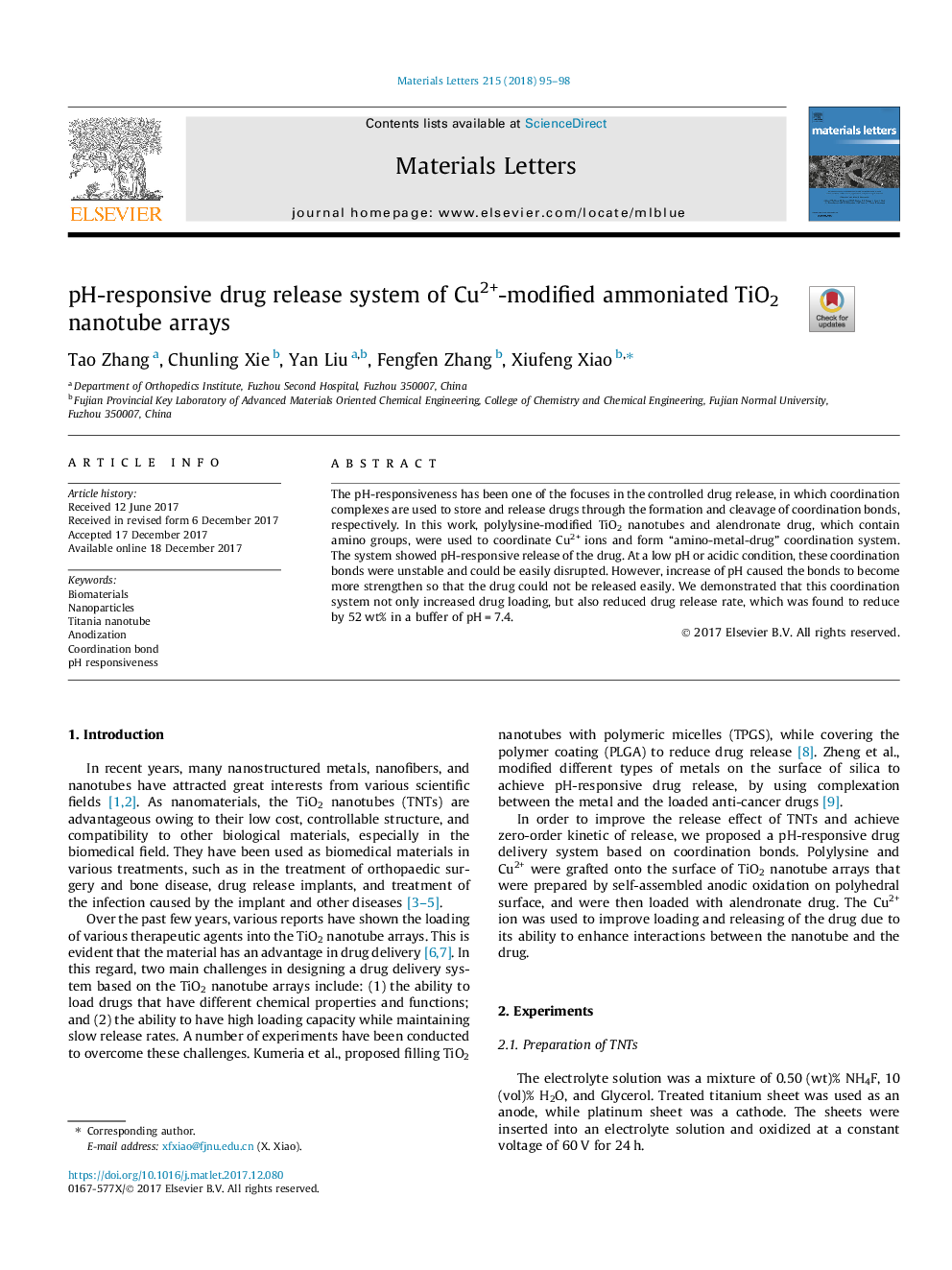| Article ID | Journal | Published Year | Pages | File Type |
|---|---|---|---|---|
| 8014792 | Materials Letters | 2018 | 4 Pages |
Abstract
The pH-responsiveness has been one of the focuses in the controlled drug release, in which coordination complexes are used to store and release drugs through the formation and cleavage of coordination bonds, respectively. In this work, polylysine-modified TiO2 nanotubes and alendronate drug, which contain amino groups, were used to coordinate Cu2+ ions and form “amino-metal-drug” coordination system. The system showed pH-responsive release of the drug. At a low pH or acidic condition, these coordination bonds were unstable and could be easily disrupted. However, increase of pH caused the bonds to become more strengthen so that the drug could not be released easily. We demonstrated that this coordination system not only increased drug loading, but also reduced drug release rate, which was found to reduce by 52â¯wt% in a buffer of pHâ¯=â¯7.4.
Related Topics
Physical Sciences and Engineering
Materials Science
Nanotechnology
Authors
Tao Zhang, Chunling Xie, Yan Liu, Fengfen Zhang, Xiufeng Xiao,
